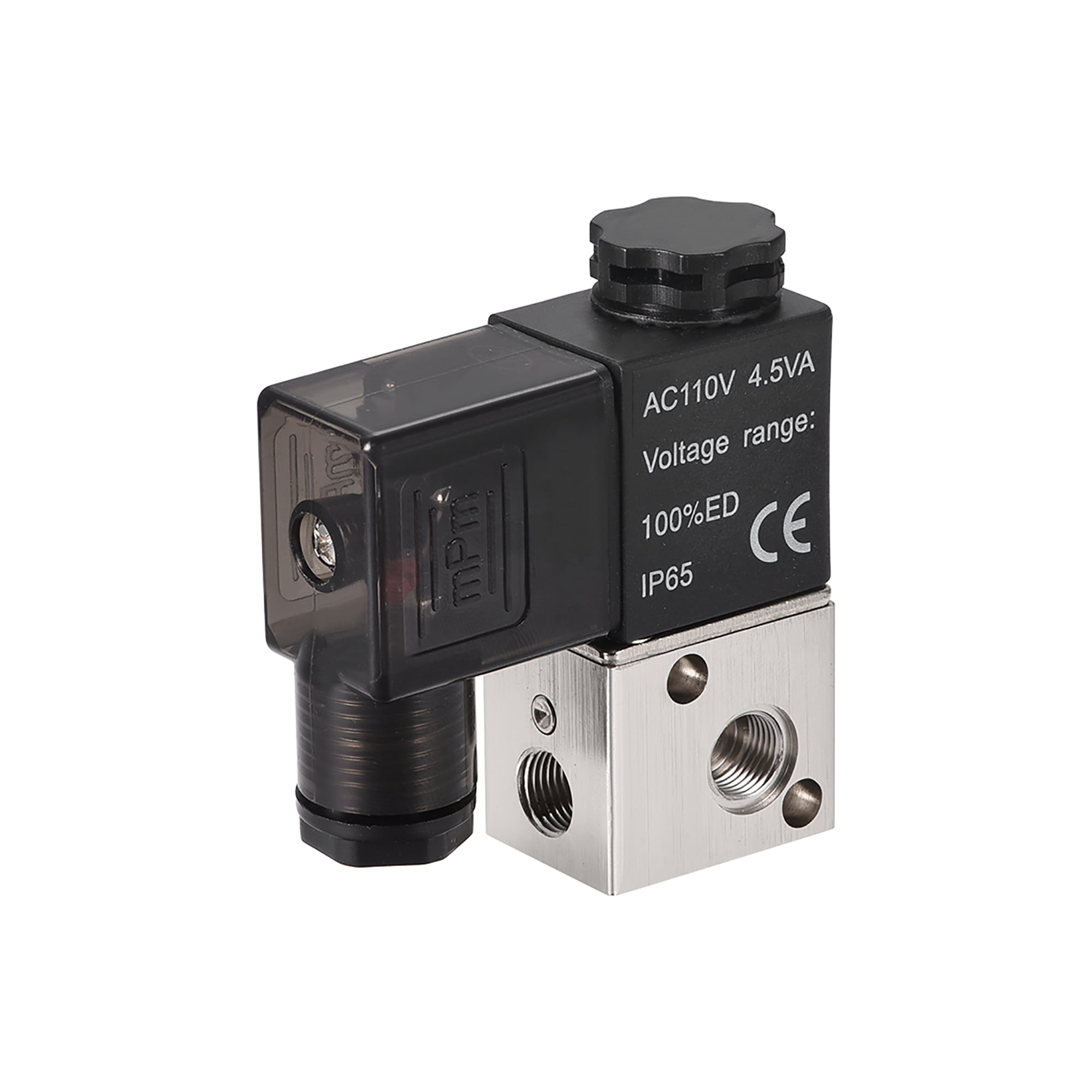
Externally piloted valves are typically used in low pressure, vacuum or alternative porting scenarios, where there is low, negative or no pressure in the valve itself to facilitate movement. This external air source is fed into an extra port on the valve. This must come from upstream of the valve, but can also be provided from a separate circuit. As the solenoid is controlling much smaller openings, it requires much less power to move compared to a directing acting solenoid valve.Įxternally piloted solenoid valves work in a similar way to internally piloted valves, but use air from an external source to assist valve movement, rather than pressure within the valve. When this is opened, pressure in the line pushes the spool across, opening the valve. In internally piloted valves, the solenoid gates a smaller passage between the line and a cavity behind the spool. This makes them capable of controlling air flow using less power than is exerted by pressure in the line. Unlike direct acting solenoids, internally piloted valves work with system pressure to aid control, rather than against it. This is because flow can be limited, and they consume a large amount of electrical power. In a N/O valve, the opposite happens – the spring keeps the spool in the open position.ĭirect acting solenoid valves are of limited use and are only seen in about 10% of applications. When the solenoid is charged, the magnetic field causes the solenoid rod to lift, moving the spool and allowing air to pass through to the other side. With direct acting, N/C valves, the solenoid rod is attached to a spool and kept in place by spring. They do not require any line pressure to work, and can operate in vacuum conditions.

In the case of direct acting solenoid valves, the force generated by the solenoid must be greater than the force exerted by the pressure of the air. Solenoid piloted valves can be further divided into internally or externally piloted valves, and are sometimes referred to as servo-assisted solenoid valves. What are the different types of solenoid valve?Īs we shall see, solenoid valves can be split into the following broad categories: direct acting or solenoid piloted.
#Pneumatic electric solenoid valve install
Applying voltage continuously for very long periods of time may shorten the coil's life expectancy.Solenoid valves eliminate the need for manual or pneumatic control of a pneumatic circuit and only require an electrical input (and air pressure for piloted valves) to operate, this makes them easy to program and install in a wide variety of applications.

It is recommended not to touch these valves while in extended operation and to keep them exposed to the air to aid in cooling them.

When voltage is applied continuously for an extended period of time, it is common for the valve body to reach high temperatures ranging from 80☌ to 110☌. When 12v DC voltage is applied, it should be expected for the valve body to heat up, especially when there is no working fluid passing through them. Because of this, the 12v valves require a bit higher than normal amperage to operate. Acting Motion Direct Acting Power Consumption: 25 Watts (12v model), 44 watts (110 VAC model) Cv Value: 0.23 Acting Motion: Direct Acting Max Viscosity: 20 CST De-energized State: Normally Open Time to fully switch ~2.0 seconds Connecting Ports: 1/4"" Female NPT Body Type: Brass Coil: Steel Shell Orifice: 2.5 mm Seal Material: NBR Seals Max Temperature: 80° C / 176° F Operating Pressure: 0-70 psi Air/Water 0-40 psi Light Oil Medium Air, Water, Gas, Oil Warranty 6 Months Life Cycle ~100,000 Switches Dimensions of unit (see drawing for reference) Length 40.5 mm Height 110 mm" 12v DC: These valves are built to handle acceptionally high maximum pressures while still maintaining no minimum pressure to open/close. It's great to be able to turn off/on heating to a SVO tank especially when it's warm out and this valve can easily be used with a thermostat to maintain tank or tank heater temperatures as well as fuel lines. We especially like to use these to block or redirect the flow of coolant in our vegetable oil conversions for vehicles. "These valves are best used with water, oil, air, or even things like antifreeze.


 0 kommentar(er)
0 kommentar(er)
